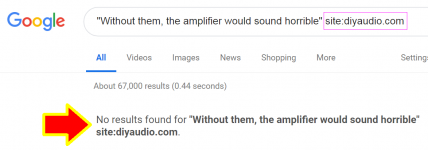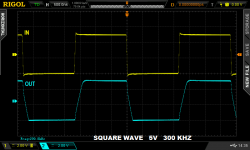The only difference is the top, bottom, and back plates. The front and heatsinks are aluminum in all versions. They are otherwise identical.
speaking of Modushop - I prefer steel ones ..... for me better, from technical point of view (better magnetic screening)
some are saying that full Al is better looking
both are on same quality level
some are saying that full Al is better looking
both are on same quality level
speaking of Modushop - I prefer steel ones ..... for me better, from technical point of view (better magnetic screening)
some are saying that full Al is better looking
both are on same quality level
Have to agree. Both of my builds use the steel chassis from the store
Inne Poland it will be too expensive than from Italy. Which version is better - aluminum or steel?
I prefer the aluminum.
Steel couples with magnetic fields, so it grants you some immunity to magnetic fields - assuming you have magnetic fields you need to block. It will also couple with the magnetic fields leaked by transformers in unpredictable ways.
Aluminum on the other hand offers essentially no EMI shielding, but it is good for RFI. Practically speaking though, the anodized finish will prevent the chassis panels from making good contact with each other. So that should be taken into consideration during construction.
Since the only magnetic fields near my gear are the transformers, and I do have RFI floating around my house, aluminum is the clear winner.
Is this correct?
Donor
Report post
Posted 20 minutes ago
56 minutes ago, Sub Sonic said:
Have a look at this @Zaphod Beeblebrox, I’m curious now.
A2180FA1-A2F8-4806-A353-BF6F79EC1F84.thumb.gif.7363b5686032cd727536356a1a672681.gif
Read more
R13 and R14 are local feedback resistors. Without them, the amplifier would sound horrible, or be unstable (thermally) or both. In the front end, R3 and R4 are also local, degenerative feedback resistors.
In relation to the M2 R1 cct diagram.
Donor
Report post
Posted 20 minutes ago
56 minutes ago, Sub Sonic said:
Have a look at this @Zaphod Beeblebrox, I’m curious now.
A2180FA1-A2F8-4806-A353-BF6F79EC1F84.thumb.gif.7363b5686032cd727536356a1a672681.gif
Read more
R13 and R14 are local feedback resistors. Without them, the amplifier would sound horrible, or be unstable (thermally) or both. In the front end, R3 and R4 are also local, degenerative feedback resistors.
In relation to the M2 R1 cct diagram.
I was refering to the cct description of what the resistors do.
The quote is not from this forum.
The quote is not from this forum.
Thanks for your replies...
Sounds like I have a couple of options... I think I might try both to see what they sound like and which one I prefer. First things first though, got to close the deal on the house and move before starting to build anything 🙁
Thanks again for your help,
Gary
Hi Gary
coming from the headphone world, there are many folk who use power amps , first watt amps in particular, to drive headphones directly
It does somewhat depend on your headphones, if you have a pair of high efficiency in ear monitors, then clearly no. But if you have planar magnetic or some of the older headphones form Beyerdynamic or Sennheiser, it could work out well for you.
a few things to consider - noise floor in power amps is often higher than dedicated headphone amps - power up transients can be much higher than typically seen in headphone amps : my M2X can spike up to a volt which on a speaker is nothing but headphones will not like this, so it will be important not to have headphones plugged in with power up and this brings in the next problem - a standard TRS jack will short the signal to ground as you plug it in - this is not something the amp will like , most people who use headphones and power amps use a 4-pin XLR which mitigates the risk for a short but does mean that your headphones will need a balanced cable.
Happy to discuss further if you want to take it to PM
..dB
trade your M2 hardware , go buy Whammy thingie and build it
or even better - go buy Whammy thingie and build it , leave M2 parts in closet for better times ......
Sounds like I have a couple of options... I think I might try both to see what they sound like and which one I prefer. First things first though, got to close the deal on the house and move before starting to build anything 🙁
Thanks again for your help,
Gary
I ran a large signal pulse response test on a Norwood board this afternoon, using a 300 kHz, 5V square wave input signal. The output waveshape was exactly as shown in Analog Devices' datasheet, which is expected but also comforting. This thing is fast. Which means, its bandwidth is high. Which means, in a single-pole rolloff, NFB circuit such as Norwood, there is tons and tons of feedback at high frequency, giving tons and tons of distortion reduction.
But how does it SOUND? There have already been a couple of listening evaluations posted here, if I recall correctly. Google Advanced Search might accelerate a hunt for them. When the 15 stereo pairs of assembled and tested Norwood boards are shipped to buyers, in February, I imagine there will be more reviews / listening evaluations posted.
_
But how does it SOUND? There have already been a couple of listening evaluations posted here, if I recall correctly. Google Advanced Search might accelerate a hunt for them. When the 15 stereo pairs of assembled and tested Norwood boards are shipped to buyers, in February, I imagine there will be more reviews / listening evaluations posted.
_
Attachments
I must admit that I have been enjoying the Tucson so much that I haven't found the urge to swap out. But I do have the parts ready to assemble the Norwood and now might just have to hear it too.
..dB
..dB
Last edited:
Interesting question isn't it. Compared to 27Ω output impedance of the jfet input buffer on original M2 (or Ishikawa), the Tucson with 25Ω should exhibit similar behavior interacting with the PC600/15k. But how does the < 3Ω output impedance of the Norwood interact with manufacturing variation of the autoformers? Does it sound better to everyone? Anybody hear any indication (such as sibilants, harshness or excessive loss on the top end) that potentially indicates a need to adjust output impedance, R5/C1 compensation combo or other improvement for future version of M2X and it's Input Stages?... But how does it SOUND? ...
Come on guys, designer of the Norwood IPS ask for your listening impressions, he does not have an access to a resource base comparable to Pass Labs. 🙂
... [the output impedance of the IPS daughter card] certainly does vary by a factor of at least 500-to-1 across the five M2x daughter cards. ... It'd be fun to mock up a modified Tucson board which adds a 1 watt 100 ohm trimpot (and bypass jumper) in series with the output. What Zout sounds best to your ears ... ?
If anyone is dying of curiosity, that would be one way to find out.
The output impedance of an unmodified Tucson board would not be difficult for curious experimenters to obtain, since TI provides simulation models of the OPA604 opamp used in Tucson. I think you'll be surprised and delighted with the number you extract; Tucson's unity gain connection (100% negative feedback!) has quite an effect upon output impedance. Just as the textbooks predict.
_
Attachments
Yes, was not thinking straight with the flu, you can not take the Tucson off the watch list. At least you are here to help builds that do ring and fortunately there does not appear to be any nasty resonance so far on M2X builds.... Tucson's unity gain connection (100% negative feedback!) has quite an effect upon output impedance. ...
Anyone know if the back order Rear panel parts kit have shipped yet? That is all I am waiting on for my build.
Anyone know if the back order Rear panel parts kit have shipped yet? That is all I am waiting on for my build.
Yep 🙂 They started shipping yesterday.
Hi all, I'm looking to build a couple of M2X monoblocks and just have a quick question about the power consumption. Basically does anyone know the power draw of the amp at +-24V?
I'm interested in using SMPS for my power supplys and I'm wondering if I can get away with using a couple of IRM-60-24 per block, giving me 120W, or whether I need to step this up to something like a couple of OWA-90E-24 per block, giving me 180W but at over double the price!
Thanks in advance!
I'm interested in using SMPS for my power supplys and I'm wondering if I can get away with using a couple of IRM-60-24 per block, giving me 120W, or whether I need to step this up to something like a couple of OWA-90E-24 per block, giving me 180W but at over double the price!
Thanks in advance!
Update on Melbourne input boards:
AKSA Lender Pass Hybrid M2 (ALPH-M2) Amp
Note thee boards have built in gain (selectable) so you can have M2X with 27dB gain closer to a typical non-Pass amp, and not need another preamp.
AKSA Lender Pass Hybrid M2 (ALPH-M2) Amp
Note thee boards have built in gain (selectable) so you can have M2X with 27dB gain closer to a typical non-Pass amp, and not need another preamp.
- Home
- Amplifiers
- Pass Labs
- The diyAudio First Watt M2x


